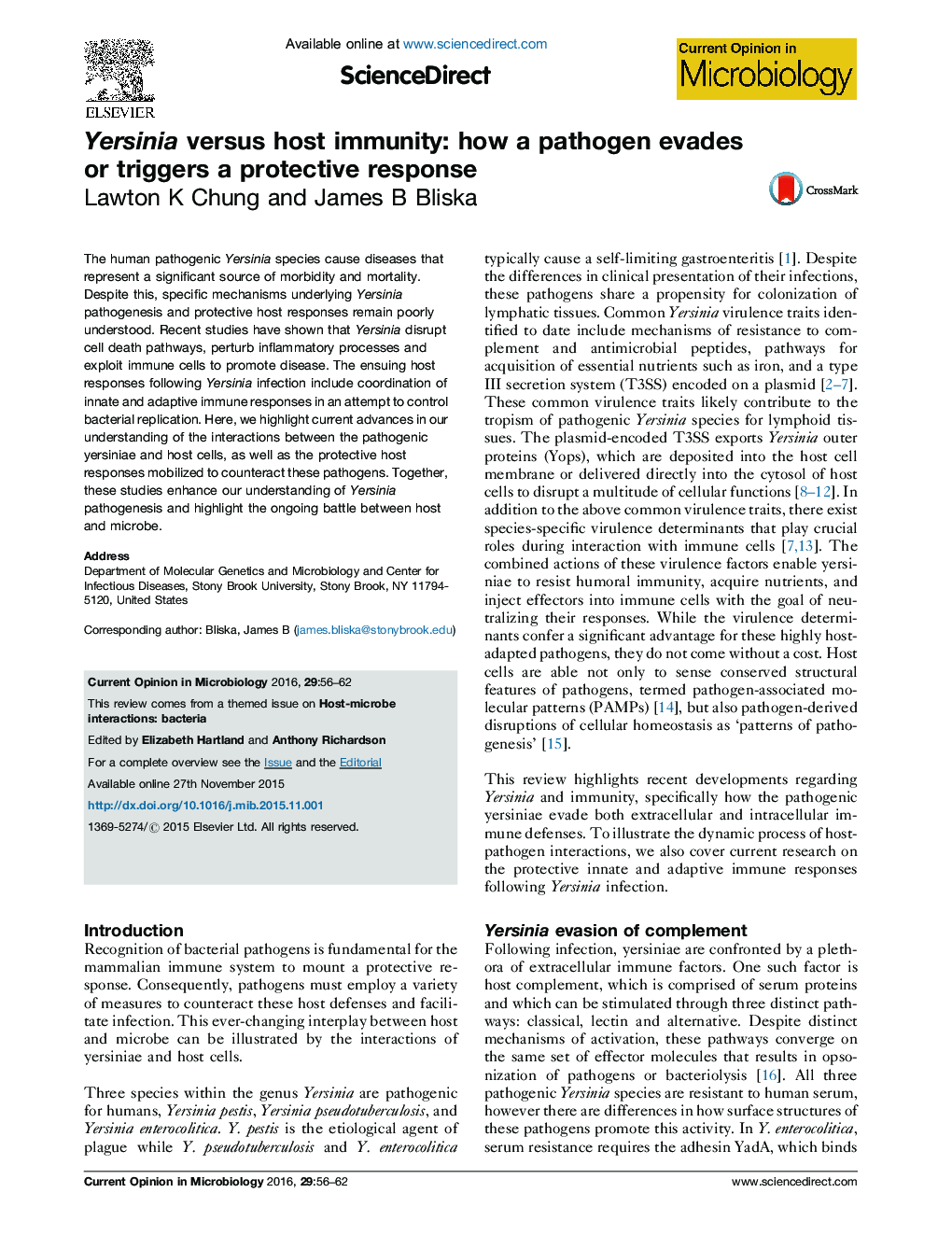| Article ID | Journal | Published Year | Pages | File Type |
|---|---|---|---|---|
| 6131703 | Current Opinion in Microbiology | 2016 | 7 Pages |
â¢Cell surface components mediate resistance of Yersinia to extracellular immune factors.â¢Interaction between Yersinia and host cells promotes dissemination and drives effector translocation.â¢Yersinia effectors, Pla protease and chromosomally encoded gene products disrupt signaling pathways and modulate inflammatory environments.â¢Structural components of Yersinia and biochemical activities of effectors trigger protective host responses.â¢Innate and adaptive immune responses restrict Yersinia replication.
The human pathogenic Yersinia species cause diseases that represent a significant source of morbidity and mortality. Despite this, specific mechanisms underlying Yersinia pathogenesis and protective host responses remain poorly understood. Recent studies have shown that Yersinia disrupt cell death pathways, perturb inflammatory processes and exploit immune cells to promote disease. The ensuing host responses following Yersinia infection include coordination of innate and adaptive immune responses in an attempt to control bacterial replication. Here, we highlight current advances in our understanding of the interactions between the pathogenic yersiniae and host cells, as well as the protective host responses mobilized to counteract these pathogens. Together, these studies enhance our understanding of Yersinia pathogenesis and highlight the ongoing battle between host and microbe.
